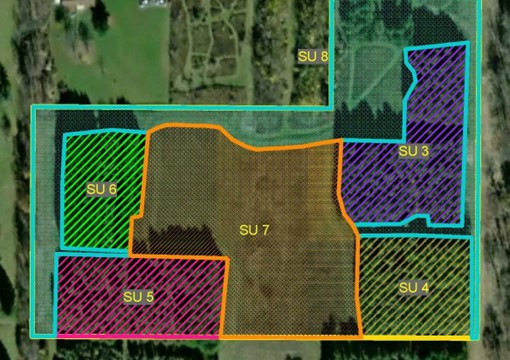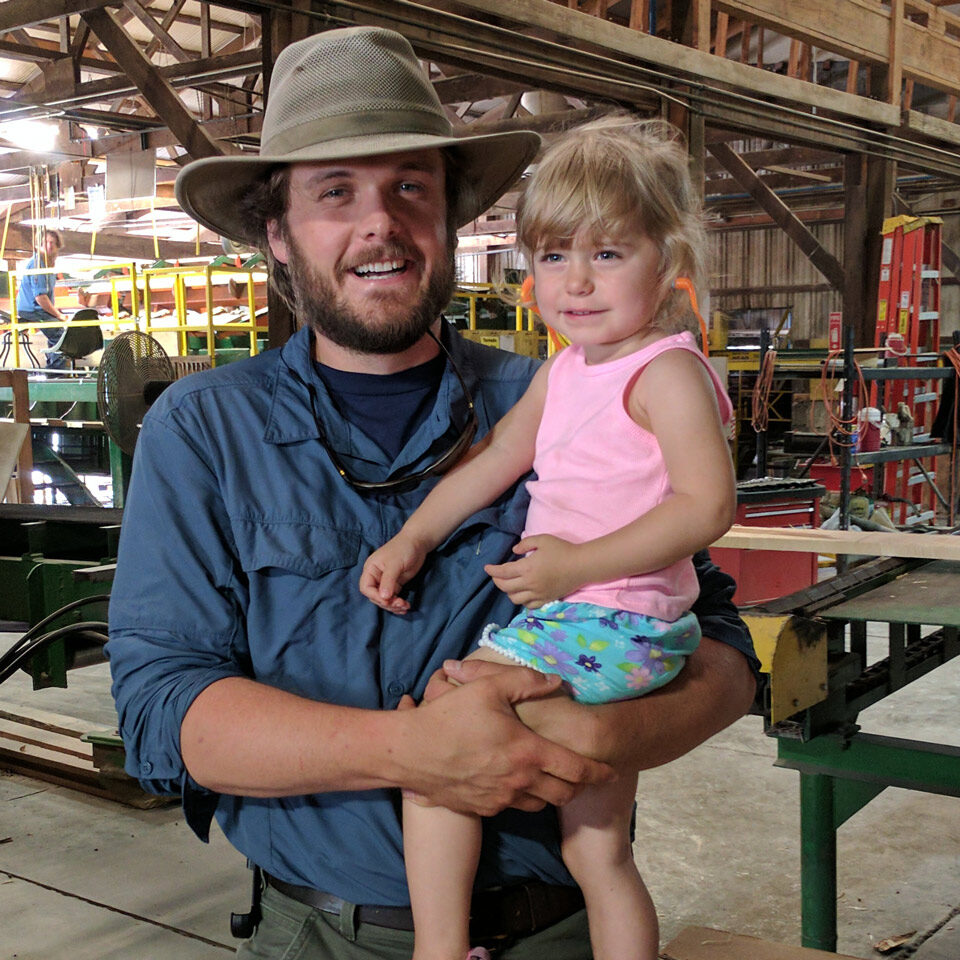
Priorities for Your Woodland & Wildlife Stewardship
All landscape stewardship efforts should be organized into a priority list.
This following will help you arrange your priorities for stewardship on the landscape:
1. Goals and Objectives
Establishing clear and concise management goals and objectives are essential to starting the process of organized management on your property. Identifying your priorities with your land will help plan a strategic management approach.
Goals identify general accomplishments desired to be achieved over an unspecified period of time.
Objectives state the manner and timeline in which each goal will be accomplished
The following are some examples of how to identify your goals and objectives.
| Goals | Objectives |
| Control invasive species | Intensively control invasive species in stewardship unit (SU) #1 by the end of September 2022. |
| Cut and treat grapevines | Strategically treat grapevines in stewardship unit (SU) #1 by the end of December 2022; keep some for wildlife especially near unproductive forested areas and near waterbodies |
| Put up habitat boxes | Install 5 eastern blue boxes and 1 bat box per year. |
| Construct habitat piles | Construct 2 habitat piles per year in stewardship units 1–5. |
| Plant pollinator habitat | Spray (with herbicide) planned area for pollinator planting in August 2022; plan to frost seed in winter of 2022-23. |
2. Management Scope
Determine your priorities:
- Wise financial management
- Timber harvesting
- Property integrity (i.e. limit disturbance)
- Woods aesthetics (i.e. downed logs, treetops)
- Leaving trees for the next generation
- Property integrity
- Soil health
- Soil stability
- Native plant species
- Oil and gas
- Controlling invasive species
Determine your concerns:
- Disease problems
- Insect problems
- Weather events
- Invasive species (native and non-native)
- Tree dieback
- Grapevine presence
- Erosion
- Woods aesthetics
- Herbicide use
- Damaged and destroyed trees
- Invasives species
- Homeowners association rules
- City ordinances
- Impact on wildlife populations
- Timber harvesting
Identify past management on your property:
- Timber harvesting
- Tree planting
- Pollinator planting
- Timber stand improvement
- Invasive species control
Identify and delineate stewardship units:
Separate management areas (according to average tree diameter at breast height, stocking density, etc.)

- Make invasive species and woody interference species (insect and plant) control a priority
Determine your wildlife management objectives such as:
- Pollinator planting
- Mast tree planting
- Water source installation
- Young forest habitat
- Wildlife survey
- Habitat box installation
Identify distinctive and/or sensitive site feature(s) on your property
3. Boundary Line Location and Maintenance
Locate the property boundaries. In order to prevent the loss of the boundary location, either paint trees along the boundary line and at the corners or you may want to install permanent makers (a T-post with a bright color four (4) to five (5) inch PVC pipe over the post) along the property boundaries every sixty-six (66) feet. This should only have to be done where the line runs through the woods. The boundaries along the roads do not need any further identification.
4. Timber Stand Improvement (TSI)
The main objective of this operation is for increasing the growth efficiency of the most desirable trees and tree species. It is important to invest time eliminating the undesirable trees, shrubs, and/or brush that are directly affecting the desirable trees. These priorities will begin to guide your woods into more sustainable productive woods for both timber and wildlife.
Some of these actions should include the following:
- Invasive species identification and control
- Woody interference identification and control
- Crop tree release
- Establishing young forest habitat
- Tree pruning (i.e. apples trees)
- Tree girdling
- Creating forest gap openings
- Insect and disease identification and control, etc.
5. Site Enhancement Options
As a steward of the land and wildlife, site enhancement options should be considered:
- Hard mast tree and shrub plantings (such oak and hazelnut)
- Soft mast tree and shrub plantings (such as apple and serviceberry)
- Food plot plantings
- Pollinator plantings
- Bird and bat habitat box installation
- Skid road maintenance
Every piece of land allows opportunities for site enhancement.
6. Timber Harvesting Schedule
A timber harvest schedule assists the landowner with a future direction for harvesting in any forest land. A purposeful harvest plan will establish a plan for a vibrant forest legacy.
This discussion was designed to help you understand the benefit of strategic landscape stewardship. These items will foster intentional and creative stewardship on your property.

About Dave Duell
Outdoorsman, conservationist, forester, father, husband, and Christian: Dave Duell owns and manages Legacy Land and Wildlife LLC and provides conservation and forestry services and guidance to Pennsylvania and Ohio. It's his passion to assist and educate land owners and other outdoors enthusiasts about the importance of being a good steward of their land and the wildlife therein. Learn more about Dave and Legacy Land & Wildlife by clicking here.

Legacy Land & Wildlife LLC is your resource for forestry, conservation, and land & wildlife stewardship. Based in Eastern Ohio, we provide services to Ohio, Pennsylvania, and beyond.
